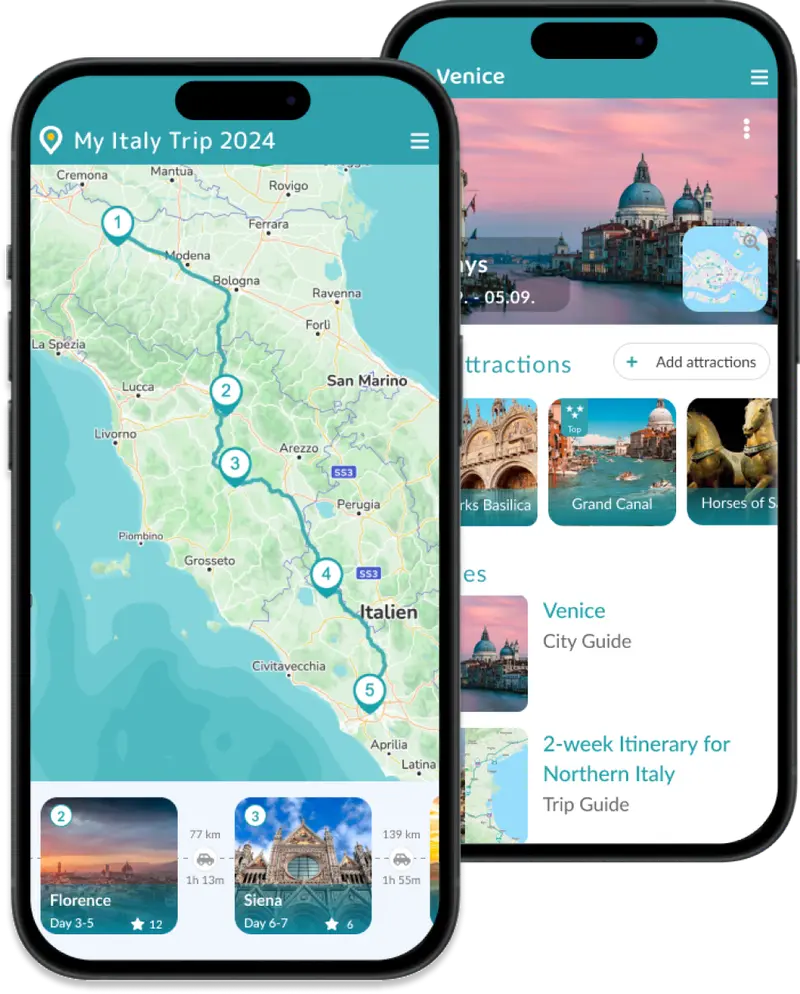Palermo, a fascinating melting pot of cultures, will enchant you with its Mediterranean flair, Sicilian cuisine and friendly people. Experience the fascinating blend of Oriental flair and European elegance as you stroll through the narrow streets of the old town. Dive into the beautiful world of Arab-Norman architecture, led by the breathtaking Palermo Cathedral and the majestic Norman Palace. Explore the diversity of local cuisine at bustling markets and sample delicious street food classics like Arancini and Cannoli. Palermo is a melting pot of cultures that enchants visitors with its charm and history.
Top Highlights of Palermo
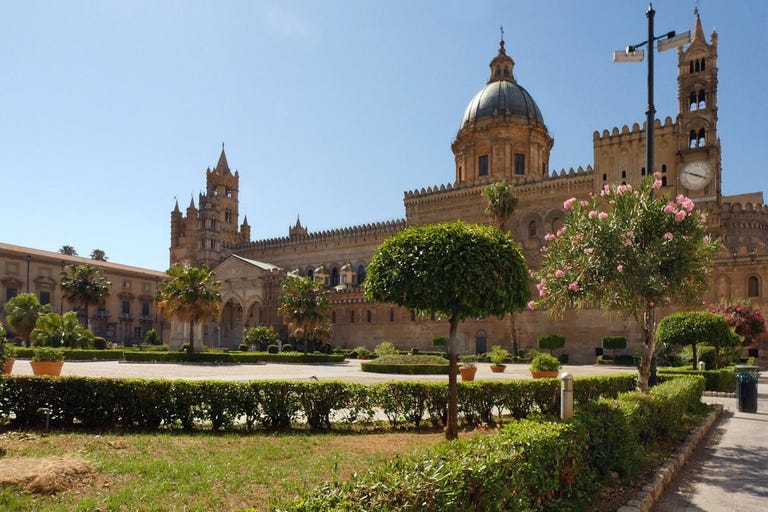





Constructed between 1608 and 1620 by architects Giulio Lasso and Mariano Smiriglio, Quattro Canti features an octagonal design. The square's architecture showcases nearly symmetric, concave facades, each divided in three classical orders and beautifully embellished with statues:




Inspiration
Travel information
How long should you stay?
Plan for a stay of 2-4 days in Palermo to fully appreciate the city, incl. a day trip to Cefalu. Palermo's diverse historic landmarks, Sicilian cuisine, nightlife, and vibrant atmosphere make it an ideal destination for a few days.
Best Time to visit
Late spring and early autumn are perfect for Palermo. Due to the mild weather in winter, you can visit Palermo year round.
Spring (March-May): Experience the charm of Palermo as it bursts with blossoming flowers, with temperatures ranging from 16°C (60°F) at night to 26°C (80°F) during the day, making it an ideal time for a visit
Summer (June-August): It get's hot! Temperatures reach an average high of 30°C (87°F) during the day and 20°C (68°F) at night, perfect for the Pellegrino hike and beach activities, but be prepared for occasional thunderstorms and crowded beach resorts in August.
Autumn (September-November): As temperatures slightly drop, ranging from 27°C (81°F) in the day to 12°C (54°F) at night in September, enjoy the harvest season for vineyards, vibrant landscapes, and fewer crowds, with occasional rain and thunderstorms.
Winter (December-February): The weather is a bit unpredictable with temperatures ranging from 17°C (63°F) during the day to 6°C (42°F) at night. If you want to avoid crowds, the off-season with cheaper prices is ideal for a city trip. You will need a sweater and a jacket, especially at night.
How to get to Palermo?
The Falcone-Borsellino Airport serves as a major gateway, offering international and domestic flights. From the airport you need around 50minutes to Palermo by bus (Palermo, Via Fazello) or by train (station Palermo Palazzo Reale-Orleans). Ferries connect Palermo to other Mediterranean destinations.
Car Rental

Fancy a roadtrip?
Be inspired by our hand-picked road trips.

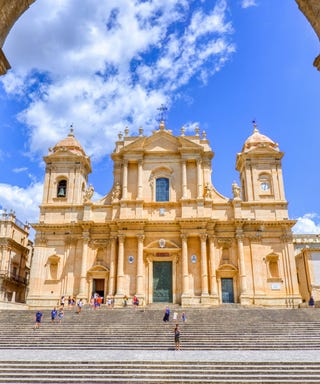

Day Trips from Palermo
Cefalù
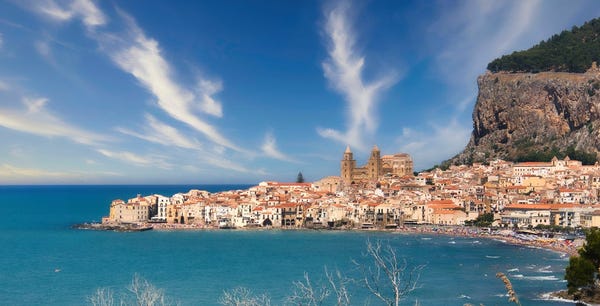
Go to the beach
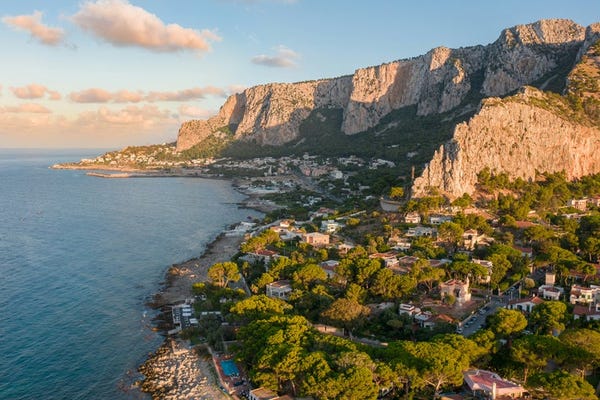
If Palermo is your base, you will want to go on a day trip to a beach. Below we have compiled a list of great beaches, which are reachable from Palermo.
- Mondello Beach: Sandy paradise with crystal-clear waters, just a 20-minute drive from the city. Private beach clubs offer amenities like umbrellas, showers, and restaurants.
- Capo Gallo: Nature reserve with a crystal-clear sea, ideal for divers and scuba enthusiasts. Accessible by public transportation, but rocky terrain may be challenging.
- Addaura: Excellent beach clubs overlooking the sea and perfect for scuba enthusiasts. Limited public space and rocky area, so opting for a beach club is recommended.
- Sferracavallo: Known for its seafood restaurants and nice beach clubs. Popular rocky littorals and great for snorkeling. Popular by young locals.
- Capaci: Comfortable, sandy beach ideal for young children. Many good restaurants and bars nearby, with both free and paid areas. However, the free areas are dirty and the paid ones fill up quickly in summer.
- Isola delle Femmine: This untouched Paradise is a natural reserve and accessible only by a paid boat tour. It takes about an hour and half, so take this in your planning into consideration.
- Cinisi: Great for kids with a sandy beach and various amenities. Accessible by car (30 km), offers a picturesque beachfront experience. Free areas overrun in peak season.
- Terrasini: Unique red rock coastline with beautiful coves. Ideal for snorkelers but challenging to reach for families with children. Accessible by car. Also bring a picknick with you since there are no immediate beach bars or restaurants.
- Balestrate: Relatively deserted sandy beach perfect for a quiet experience. Reachable by car within 50-minutes, it offers a peaceful beach day. Due to the swift currents, the turquoise water is clean and clear.
- Cefalù: Easy public transportation access to the historic fishing town. A variety of beaches, including sandy, rocky, and pebbled, with both free and paid options.
Visit the Archaeological Park of Segesta
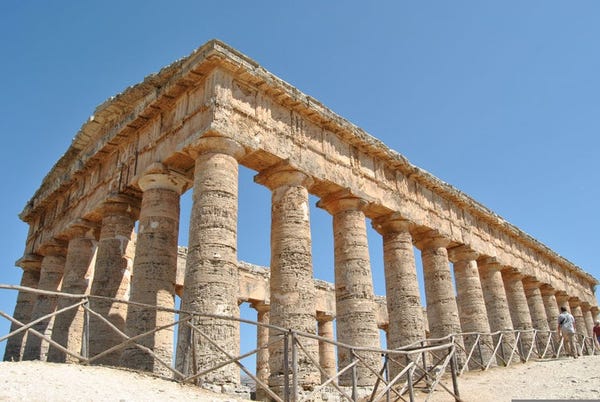
How to get there: The Temple of Segesta is located about 75km from Palermo, and by car you will need roughly 1 - 1.5 hours. Without a car you can get here by booking a tour from one of the tour operators in Palermo.
Be aware, that from the parking area it's around 1.5km uphill to the temple and then some more hiking to the theatre. So arrive early, have good footwear, and avoid the midday sun. Alternatively, you can take the shuttle bus. However, you will miss a few sites between the bus stops.
Bunker Di San Cataldo
Embark on an off-the-beaten-path adventure to the Bunker Di San Cataldo, an abandoned bunker that not only offers breathtaking coastal views but also tells a compelling history story. Only 11km from Palermo, it takes around 20-30 minutes by car to reach. This hidden gem promises a unique experience for those seeking panoramic vistas with a touch of historical intrigue.
Local Specialities
What to Eat

End your meal with a sweet note by trying traditional desserts like Cannoli and Cassata. And you must have a gelato. Seriously. Palermo stakes a claim on the inventor of ice-cream!
Here is a more thorough list of local dishes:
- Panelle: are one of the most popular street foods in Palermo. The chickpea fritters are served in a round bun with sesame seeds on top. Best enjoy them warm, drizzled with lemon juice, and topped with fresh ricotta cheese. This dish was introduced to Sicily by Arabs between the 9th and 11th century.
- Pasta chî sàrdi: You must try this delicious Sicilian pasta dish. Also of Arabic origins, the pasta (bucatini, bigoli, or perciatelli) is served with delicately flavored saffron sauce, fresh sardines, wild fennel, pine nuts, and sultanas.
- Cannoli: The iconic crispy fried Sicilian dessert is filled with ricotta cheese cream. According to legend, the Cannoli have originated from the harem of a Saracen emir at the ancient city of Qal'at al-Nisā'.
- Arancini: Golden rice balls with various savory fillings like meat sauce, peas, cheeses, and capers; fried to a golden color and named after their resemblance to small oranges.
- Torta Setteveli (Cake of the Seven Veils): Traditional Sicilian birthday cake with alternating chocolate and hazelnut layers, creating a rich and indulgent dessert.
- Caponata: Sicilian vegetable dish, dating back to the 18th century. There are over 30 recipes for caponata, but they all feature eggplant and tomatoes. Other ingredients are capers, olives, celery, and optionally pine nuts and raisins
- Crocchè: Famous Sicilian deep-fried snack made with mashed potatoes, eggs, Parmigiano and mozzarella cheese. The snack was inspired by the French croquette in the 17th century. This was the time, when potatoes became common in Sicily.
- Spaghetti al Nero di Seppie: Classic Italian dish with spaghetti in a dark cuttlefish ink sauce, featuring sliced cuttlefish, garlic, olive oil, white wine, and occasionally tomatoes; garnished with parsley and enjoyed as a warm appetizer.
- Focaccia: is a chewy, oily flatbread served with diverse toppings such as sea salt, olive oil, herbs, tomatoes, or olives. The name is derived from the Roman panis focacius, meaning “hearth bread”. This ancient bread is said to originate from the Etruscans or ancient Greek.
- Sfincione: The traditional Sicilian focaccia (flatbread) is topped with oregano-flavored tomato sauce, onions, anchovies, and local cheeses. It is a popular street food with a unique breadcrumb crust. Get it from one of the street vendors, driving with their three-wheeled Piaggio Ape food trucks.
What to Drink
Try local wines like Nero d'Avola and Grillo, showcasing the region's winemaking excellence. For a refreshing experience, indulge in a glass of freshly squeezed Sicilian orange juice or sip on a traditional Sicilian almond milk.
Restaurant recommendations
- Doba restaurant and terrace: Incredible location, overlooking the Teatro Massimo with excellent dishes of outstanding quality
- Bartolo Sicilian food lover: excellent fish restaurant with delicious and beautifully arranged dishes, right in the city centre. Good value for money
- Trattoria Biondo: Embrace the warmth of Sicilian hospitality while savoring traditional dishes made with fresh, locally sourced ingredients.
- Enosteria Sicula: A very good restaurant located in the centre of Palermo, just a stone's throw away from Piazza Politeama. The menu seamlessly blends traditional and innovative dishes.
- A'Cuncuma: A pricier gourmet-restaurant a bit outside the city centre. However, the excellent cuisine, superb wines and great service are well worth it. Consider a degustation menu
- STUZZICANDO: small place in a quiet side street with delicious and authentic food (Pizza & Pasta). Good value for money. We recommend you take a table inside, since the side street isn't so nice to sit at.
- Antica Focacceria San Francesco: A historic eatery serving authentic Sicilian street food, including the classic Pane con la Milza (spleen sandwich).
- Allah Rakha: If you are looking for a quick, cheap bite, try this place. They offer Kebab.
Shopping
Shop for Authentic Italian Finds: Palermo's markets and alleys offer a diverse range of authentic Italian products. From traditional wares to modern boutiques, discover unique souvenirs.
Shopping Spots
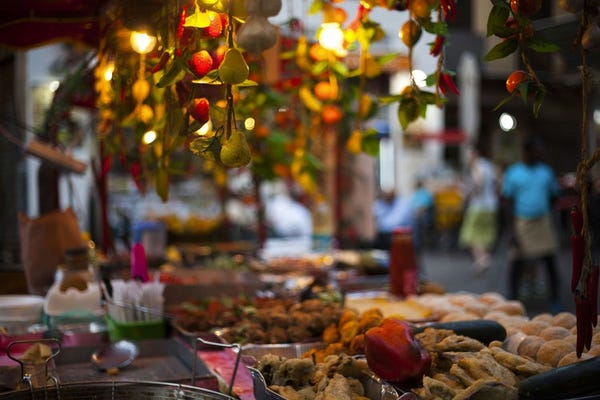
Arab-style Street Markets: Enjoy the vibrant atmosphere of Palermo's 5 historic street markets. They are: Ballarò, Capo, Vucciria, Borgo Vecchio and Lattarini. Here you will find the best street food in town. We can recommend the market Ballarò to you.
Fun Facts
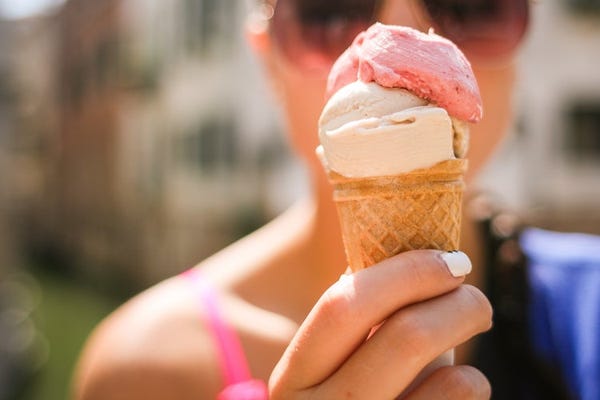
- Conqueror's Crown: Palermo wears the title of the most conquered city in history with pride.
- Did you know? Ice-cream is said to have been invented in Sicily by a man named Francesco Procopio dei Coltelli.
- Let's stay with dessert! Cannoli also originated from Palermo, already in the 9th-century under Arab rule. According to legend they were first made in the harem of the ancient city of Qal'at al-Nisā', later adopted by Palermo's monasteries and prepared by nuns during the carnival season.
- UNESCO Domination: Palermo proudly hosts one of the largest clusters of UNESCO sites globally, with a total of 12 within the city and more throughout the province.
- Ancient Church Haven: Palermo boasts over 230 ancient churches, some standing for more than a millennium.
- Palermo is home to Europe's third-largest opera theatre
- Eat your vegetables! Surprisingly, Sicilians eat much more vegetables than pasta or fish
History
Palermo, the capital of Sicily, boasts a rich history that dates back to over 2,700 years. Founded by Phoenician traders in the 8th century BCE, Palermo became a flourishing center under Arab rule from 831 to 1072, known for its vibrant trade connections and as a hub of rich cultural exchange. This period introduced remarkable architectural and cultural advancements, including the establishment of Palermo as the capital of Sicily for the first time.
The Norman conquest in 1072 ushered in a golden age for Palermo, with the city becoming the capital of the Kingdom of Sicily. This era is celebrated for its cosmopolitan culture and the harmonious coexistence of Greeks, Arabs, Jews, and Normans, which fostered a unique and vibrant cultural milieu. The Normans initiated a prolific period of monumental construction, blending Arab, Byzantine, and Norman influences, evident in landmarks such as the Palatine Chapel and the church of the Martorana.
Following the Norman period, Palermo experienced varied fortunes under the rule of the German Hohenstaufen dynasty, the French Angevins, and eventually the Spanish Aragonese and Bourbons. Each of these periods contributed layers to Palermo's rich historical and cultural fabric, culminating in the city's role in the unification of Italy in 1860. Throughout these epochs, Palermo was a melting pot of cultures, which is reflected in its diverse architectural styles, from Romanesque and Gothic to Baroque and Art Nouveau.
In contemporary times, Palermo remains a testament to its complex history, serving as Sicily's cultural, economic, and tourism capital. The city's historical sites, alongside its celebrated gastronomy and vibrant markets, continue to draw visitors from around the world, making it a pivotal Mediterranean destination.



